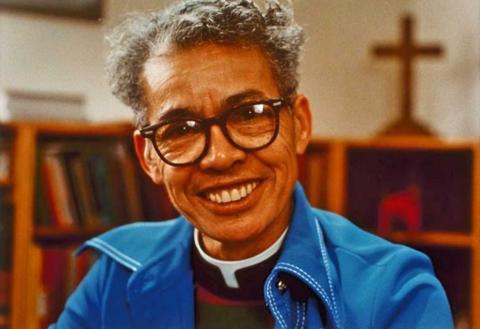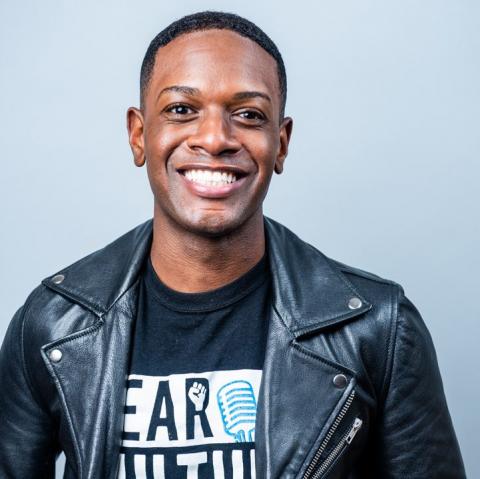
Black Queer Activists of Yesterday, Today, and Tomorrow
By Ahlanna Jackson (NSC 2022-2023)
To be Black and queer in America in the 21st century is to be a target of the twin evils of racism and homophobia while simultaneously reveling in the prevalent culture of love, unity, and care embraced by both communities.
As a descendant of enslaved peoples, my heritage is deeply rooted in an appreciation for self-liberation and the audaciousness of fighting for one’s rights. Unfortunately, sometimes within those roots lies a permeating antipathy towards queer folk that has significantly hampered the Black community’s willingness to accept non-cisgender and homosexual individuals for who they are. This reluctance to abate the prevalent homophobic attitude of the past is arguably a remnant of the widespread practice of respectability politics that has been instilled in older generations.
Post-Civil War, newly emancipated African-American’s struggling to assimilate into a hostile society adopted the policy of respectability; this is the practice of behaving in a compliant, docile, and reserved manner to be perceived as more acceptable, or, as my grandma often said, “sittin’ down and shuttin’ up”. This mindset of denouncing cultural habits that are perceived as “improper” by the wider society heightened the presence of homophobia in the community since queerness in the mid-20th century was targeted just as much as Blackness. As a result, Black queer folk have been forced to choose between concealing their sexual identity to maintain their connection to their Black identity or embracing their sexuality and taking the risk of being shunned away from their family, friends, and community as a whole.
I experience this dilemma of suppressing one of my identities to maintain my connection to the other in my Black household today. My sexual identity has caused me to distance myself from some of my friends and family for fear of rejection and abandonment. It is sadly common for young Black queer folk to be ostracized, abused, and even kicked out of their homes for their sexual identity. This shared fear of experiencing this from our loved ones is what prevents so many of the Black LGBTQ+ youth from embracing their authentic selves, which is a serious problem that the entire Black community needs to address. To fully address this problem, we all must begin by educating ourselves.
The teachings of Black history are minimal in most public schools around the country, and the teachings of queer history are virtually non-existent. Thus, amid the dangerous implications of Florida’s “Don’t Say Gay'' Bill and AP African-American studies course being banned from Florida schools, it is more important now than ever to address the intersecting histories of Black queer individuals that have pioneered change for the betterment of this country. Here’s a short list of a few queer heroes who have and continue to inspire my work in LGBTQ+ activism:
Pauli Murray (1910-1985)
I first came across Pauli Murray’s story when studying the Brown vs. Board of Education case Supreme Court ruling in my American history class. Before graduating from Howard University’s Law school, from which Murray would be the first individual that did not identify as a cis-gendered male to do so, they authored an essay for their final seminar on civil rights that would inspire Thurgood Marshall to use the strategy of attacking the “separate but equal” doctrine in the case.
Born in 1910 in Baltimore, MD, Pauli Murray is considered to be one of the most influential social activists of the 20th century. In their time at Howard, Pauli led and organized numerous protests against racial inequality and authored several essays on laws that legalized the practice of excluding women and Black people. Their undeniable passion for fighting for equal rights was informed by the continuous discrimination they faced being perceived as a Black woman in America. Murray coined the dual-oppression Black women faced as Jane Crow.
Though many sources speak highly of Murray’s significant contributions to the Civil Rights and feminist movements of the 20th century, many of them fail to acknowledge the internal struggle they experienced as they tried to accept their queerness and society prone to queerphobia. Pauli described themself as having an “inverted sex instinct” and wrote in their diaries that they were attracted to hyper-feminine women. They often preferred to be identified as a man, or sometimes, neither a man nor a woman, and dressed in androgynous clothing. Their quest to understand their sexual identity caused Murray serious emotional turmoil as doctors would often dismiss their severe mental breakdowns and request gender-affirming medical treatment. In today’s society where queerness is much more tolerated and accepted than it was in the 1950s, Pauli may have identified as a transmasculine non-binary individual. The complicated nature of Murray’s struggles made them all the more passionate about combating the twin perils of racial and gender inequality. Overall, the many other contributions Pauli Murray has made to addressing discrimination against women, people of color, and LGBTQ people in this country have made them a true icon in American history.
Gladys Bentley (1907-1960)
A fiery force of the Harlem Renaissance, Gladys Bentley was a talented blues singer, pianist, and entertainer that made quite the name for herself throughout the speakeasies and clubs of Harlem, New York. The Harlem Renaissance was a pivotal point in African-American culture that fostered the intellectual and cultural revival of various forms of art and literature in the early 20th century. Being one of the most prominent, known lesbian performers of this era, Gladys Bentley’s success story has inspired generations of Black queer artists across the country.
From an early age, Bentley rejected the idea of gender conformity and femininity causing her to face serious backlash from her friends and family for non-heteronormative behavior. The blatant lack of acceptance from her family resulted in Bentley running away from her home in Philadelphia and starting her career as an entertainer in New York City.
Her success began at a notorious gay speakeasy known as "Harry Hansberry's Clam House," which is where she decided to start performing in men’s attire – full tuxedos, small bow ties, and her signature top hat. She was headlined for numerous clubs as a Black, lesbian, cross-dressing performer with raunchy lyrics that reflected her “abnormal” lifestyle. Her performances were often described as flamboyant and risque given that Bentley would often sing about her lesbian lovers, flirt with women in the audience, and use her deep, booming vocal style to keep the crowd energized all while being backed up by a chorus line of drag queens. I would LOVE to see one of Gladys Bentley’s lively performances; from the flashy clothes to the powerful underbeat of the “jungle rhythm” style she was known for. Bently was a ball of musical energy that I would most definitely pay to see live. Aside from her legacy as a musician, Bentley’s unwavering boldness in proudly exhibiting her masculinity as a Black female which was incredibly frowned upon at the time paved the way for queer artists, especially masculine-presenting Black women, to be more accepted in their entertainment industry and society as a whole.
Gerren Keith Gaynor (1989-present)
When an individual with multiple marginalized identities enters the professional world, they often are told to reject some of their cultural norms to be a more “suitable” candidate for the position. For the 33-year-old journalist, Gerren Keith Gaynor, embracing his identity as a queer Black man has opened a world of opportunities that span beyond the streets of Brooklyn, New York.
As the White House Correspondent and Managing Editor of Politics at TheGrio, Gaynor has used his work in the media to amplify both the Black, Brown, and LGBTQ+ community through being his authentic self on all fronts.
At TheGrio, which is an American television network and website catered to Black American news and entertainment, Gaynor hosts a very real podcast called Dear Culture – emphasis on the real. He perfectly addresses the problems that the Black community still faces today by intertwining examples from his personal life and his childhood into the conversations. The passion and vehemence Gaynor speaks with as he describes his journey of finding acceptance after growing up as a gay Black man in a not-so-accepting Black household makes his content that much more relatable. As a frequent podcast listener, some of my favorites being Therapy for Black Girls and NPR’s Code Switch, the few episodes from Gaynor that I have listened to so far have quickly made Dear Culture another favorite on my list.
Additionally, his unique take on various political issues as a White House Correspondent provides a fresh perspective for queer, Black, and young people across the country to learn from. His incredible work ethic, determination, and authenticity as a journalist helped TheGrio become the first Black-owned media outlet to have a designated seat in the White House press room. Aside from this, he has worked as an editor for various credible media outlets like BET, Fox News, and Vibe Magazine, once again bringing some realness to politics and entertainment. Gaynor has and continues to use his platform to humanize the Black and LGBTQ+ experience by accurately telling our stories in his work. All in all, Gerren Keith Gaynor is a prime example of why it is so important to be your authentic self in spaces where diversity has historically not been embraced.
The work these individuals have done has pioneered immense change in the Black and LGBTQ+ community and has allowed us not only to be seen but to be heard in a society that has tried to silence us for generations. Now, the young queer activists of tomorrow like myself and my Black LGBTQ+ peers on GLSEN’s National Student Council must work to unite both communities in the fight against racism and homophobia. Though we are young, our voice is loud, and together, we will be more powerful than any generation to come before us.
Written by: Ahlanna Jackson (NSC 2022-2023)
Works Cited
Brownworth, Victoria A. “LGBTQ History Month: Pauli Murray was an architect of history.” Bay Area Reporter, 20 October 2021, https://www.ebar.com/story.php?ch=news&sc=history&id=309833. Accessed 19 February 2023.
Ennis, Dawn. “10 Black LGBTQ+ Figures And Activists To Know This Pride Month.” Forbes, 23 June 2021, https://www.forbes.com/sites/carolinecasey/2023/02/15/disability-inclusion-means-action/?sh=2972c6bf6d36. Accessed 18 February 2023.
“Gerren Keith Gaynor, Author at TheGrio.” TheGrio, https://thegrio.com/author/gerrengaynor/. Accessed 19 February 2023.
Harris, Fredrick C. “The Rise of Respectability Politics.” Dissent Magazine, Dissent Magazine, 2014, https://www.dissentmagazine.org/article/the-rise-of-respectability-politics. Accessed 19 February 2023.
Shah, Haleema. “The Great Blues Singer Gladys Bentley Broke All the Rules.” Smithsonian Magazine, 14 March 2019, https://www.smithsonianmag.com/smithsonian-institution/great-blues-singer-gladys-bentley-broke-rules-180971708/. Accessed 19 February 2023.


